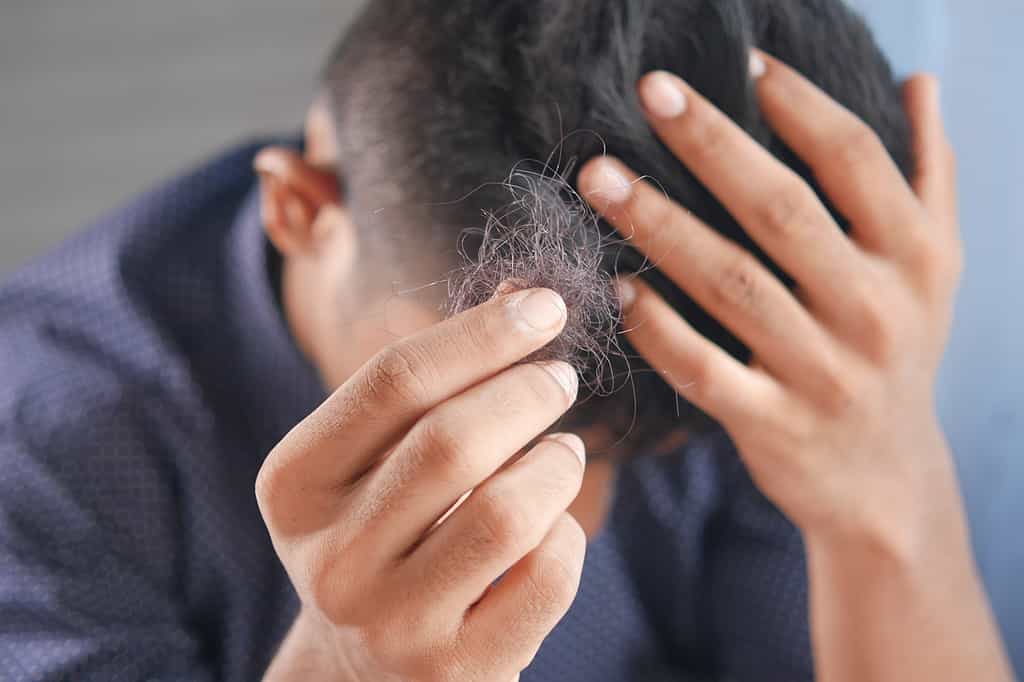
Hair: it crowns our heads, coming in a multitude of shapes and colors. We may not fully grasp the evolutionary significance of hair —beyond the realms of aesthetics and protection— but it undeniably holds a profound significance in our lives. It shapes identities, gives us a sense of pride, and keeps us a bit warmer. But when it begins to fade, it can take a piece of our history (and our pride) with it.
Hair loss can be pretty annoying. For many individuals, hair is an essential component of personal identity, causing them to lose confidence. Society’s standards often celebrate lush hair as a hallmark of beauty or attractiveness. Hair loss can, therefore, alter how a person feels they are perceived by others, potentially leading to social anxiety or decreased confidence. In fact, dealing with hair loss can trigger feelings of sadness, frustration, or even depression.
But more and more, science is finding ways to combat hair loss. Here are some of them.
The Promise of Platelets
Platelet-rich plasma (PRP) injections are becoming increasingly popular — not just for hair loss, but also for sports injuries. The underlying principle is to use a patient’s own blood cells to accelerate healing in a specific area.
Your blood contains platelets that can aid healing and growth. Doctors spin your blood in a centrifuge to concentrate these platelets, then inject them into your scalp. Think of it as nourishing your hair roots with a cocktail of growth factors straight from your bloodstream. Studies have shown this can wake up dormant hair follicles, much like rain reviving a parched garden.
The technique can address male pattern blindness, stimulate the growth of hair transplants, and enhance overall hair health. As the treatment uses the patient’s own blood, no major side effects are usually reported. However, you need a professional environment and a specialist for this treatment.
Laser hair caps
Low-level laser therapy (LLLT) has recently emerged as a reliable and safe devise-based modality for stimulating hair growth in men and women with androgenetic alopecia — the most common form of baldness. Essentially, you use a laser hair cap on your head. By exposing your scalp to a specific wavelength of light, this therapy aims to energize cells and kick-start hair growth. It’s a non-invasive beacon of hope that, according to research, has helped many in their quest for denser foliage on their personal terrains.
The technique has been used for decades for various conditions and LLLT has demonstrated a remarkably low incidence of adverse effects. This makes it a non-invasive and safe technique.
Studies suggest that the technique can work on its own, but the hair regrowth effects can be boosted when combined with topical Minoxidil solution and oral Finasteride. Which leads us to…
Minoxidil and finasteride
You’ll find several products that claim to fight pattern baldness, but the US FDA has only approved two drugs. Minoxidil and Finasteride are two science-backed pharmaceutical approaches to treating hair loss, specifically the kind known as androgenetic alopecia, or pattern baldness.
Minoxidil is a topical treatment that you apply directly to the scalp. It’s not entirely clear how Minoxidil stimulates hair growth, but scientists believe it works by opening up blood vessels in the scalp. This action increases blood flow to the hair follicles, which can improve hair follicle function and stimulate hair growth. Experimentally, it does seem to work in some instances.
Finasteride, in contrast, is an oral medication that reduces the production of dihydrotestosterone (DHT), a hormone derived from testosterone. DHT is believed to be a key factor in the process of androgenetic alopecia. By inhibiting the enzyme 5-alpha-reductase, which converts testosterone to DHT, Finasteride can reduce hair loss and, in some cases, stimulate regrowth.
There is a lot of research into new treatments for baldness, but for now, few are actually shown to produce results. It’s worth focusing on them rather than others.
JAK Inhibitors (for alopecia areata)
We haven’t mentioned this before, but baldness (technically called alopecia) is not a one-size-fits-all condition. The most common type of baldness is pattern baldness, but there are other types — and one of them is called alopecia areata.
Alopecia areata is an autoimmune condition characterized by sudden, unpredictable hair loss. It occurs when your immune system mistakenly attacks hair follicles, where hair growth begins, causing the hair to fall out, often in clumps the size and shape of a quarter. This is an autoimmune disorder that causes hair to fall out in round patches. It can lead to complete scalp hair loss (alopecia totalis) or even loss of all body hair (alopecia universalis).
Researchers found that by inhibiting something called JAK, they can treat alopecia areata. JAK inhibitors, or Janus kinase inhibitors, are a type of medication that block the activity of one or more of the Janus kinase family of enzymes. These enzymes play a critical role in the signaling of important cellular processes related to inflammation and immune function.
“Because alopecia areata is an inflammatory condition, a JAK inhibitor will essentially reduce the inflammation that is fueling the disease and bring your immune system back into balance,” said dermatologist Dr. Sandra Johnson. She is an adjunct professor at the University of Arkansas for Medical Sciences, in Little Rock.
“The development of JAK inhibitors has given us another treatment to improve the lives of patients with alopecia areata,” Johnson said in a news release from the American Academy of Dermatology.
Although people have been looking for a cure for baldness for centuries, tangible progress has happened only in the past few years. While the full mastery of hair regrowth remains just beyond our current grasp, the strides made in understanding and treating different forms of baldness are encouraging.
The tale of hair loss is an old one, but there is reason for optimism.






